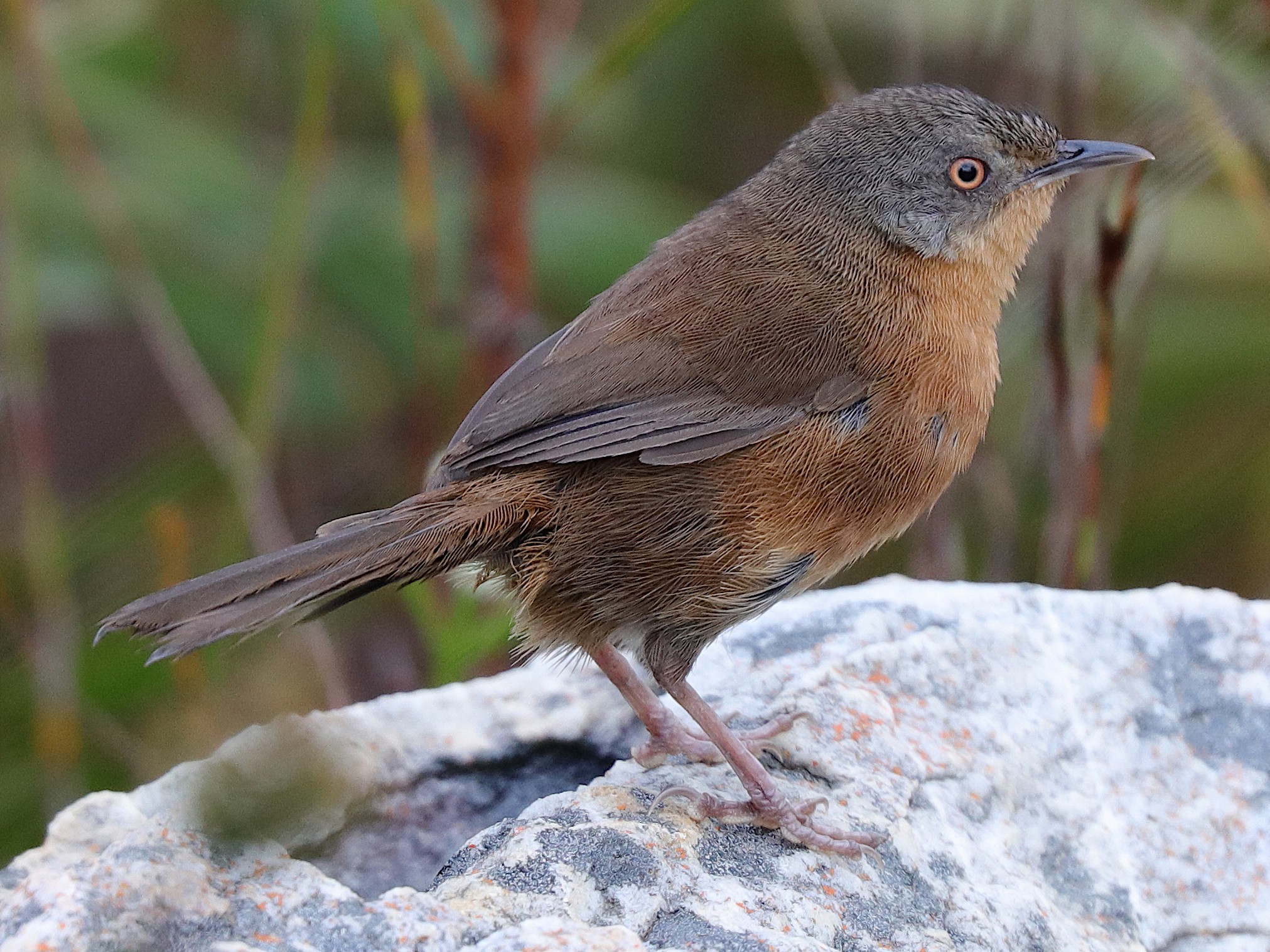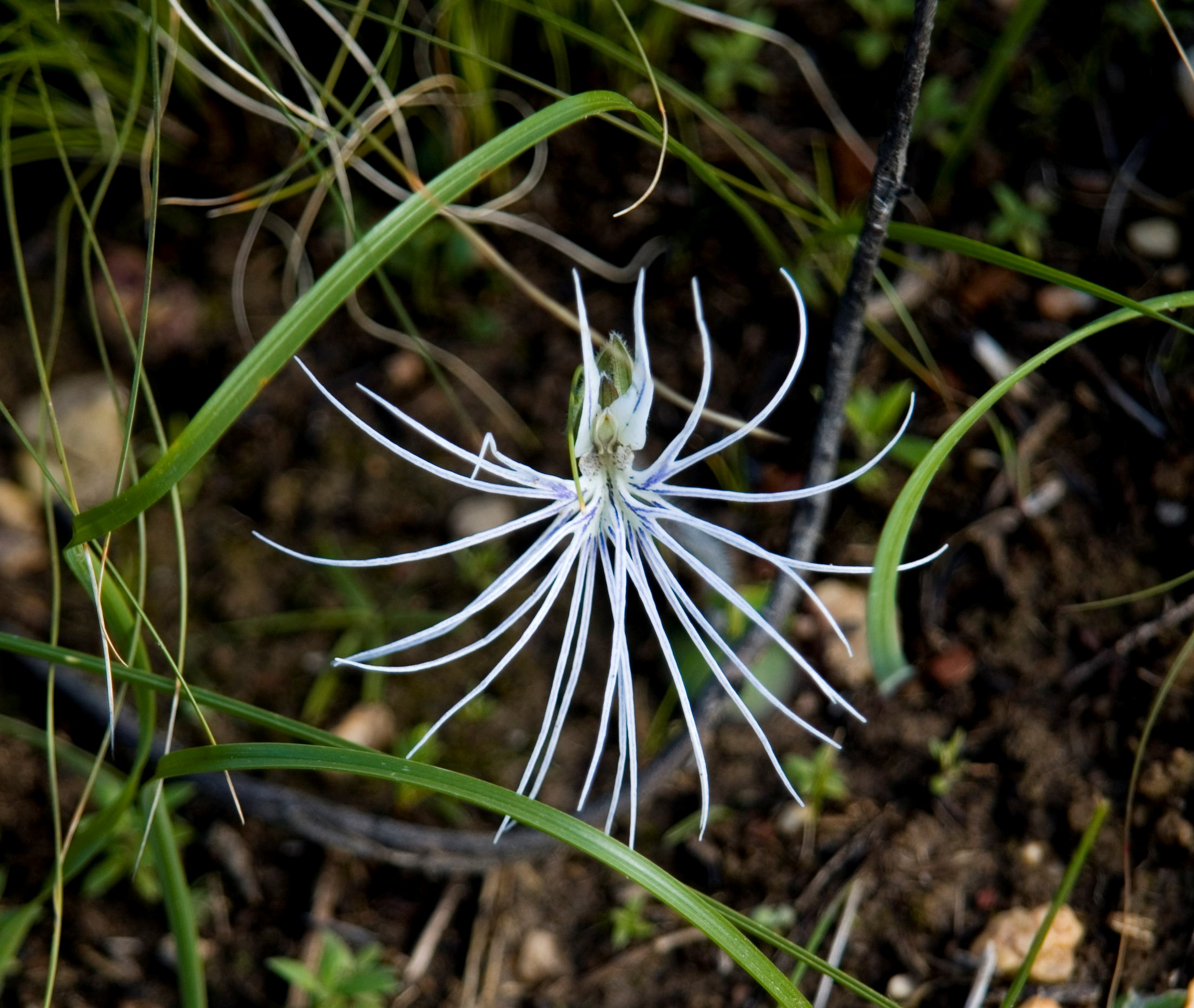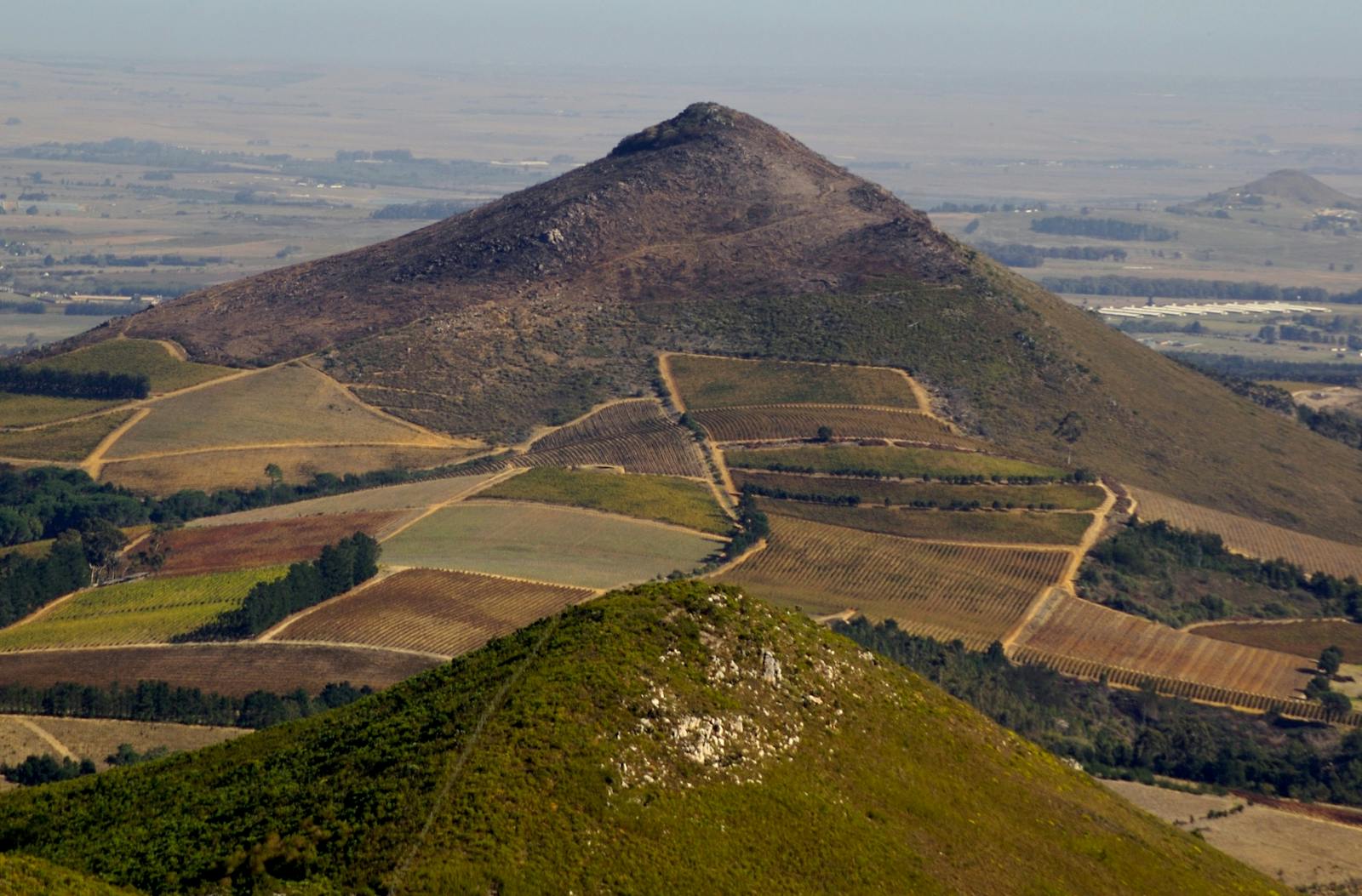Renosterveld Shrubland
The ecoregion’s land area is provided in units of 1,000 hectares. The protection goal is the Global Safety Net (GSN1) area for the given ecoregion. The protection level indicates the percentage of the GSN goal that is currently protected on a scale of 0-10.
Bioregion: South African Cape Shrublands & Mountain Forests (AT2)
Realm: Afrotropics
Ecoregion Size (1000 ha):
2,844
Ecoregion ID:
90
Conservation Target:
27%
Protection Level:
1
States: South Africa
The Cape Floristic Region (CFR) of South Africa supports the entire range of one of the world’s six floral kingdoms. The Renosterveld Shrubland ecoregion, along with the Fynbos Shrubland ecoregions, contain 7,000 of the vascular plant species found in the CFR, many of which are restricted to areas of 100 km2 or less. Renosterveld contains one of the most species rich assemblages of geophytes in the world and the only places where comparable levels are found are Madagascar and New Zealand.
This ecoregion comprises the upland and lowland Renosterveld Shrubland portion of the world-renowned Cape Floristic Region (CFR) located in southwestern South Africa. Most of this ecoregion receives annual rainfall between 250 mm and 650 mm and is replaced by succulent karoo when rainfall drops below this range and fynbos when it rises above. Temperature lows are more extreme in the highlands than in the lowlands. Frost is widespread on upper peaks where snow cover may maintain for several weeks in the winter months. Summer temperatures seldom exceed 30oC, except in the interior valleys. The forelands along the West Coast are influenced by the cold Benguela Current and are prone to fog.
There are five major perennial river systems in the Cape Floristic Region, all of which traverse this ecoregion. These rivers are important migratory routes for the fauna and flora and provide opportunities for exchange between the biotas of the coastal forelands and interior basins. Renosterveld is Afrikaans for rhinoceros veld, as a possible reference to the historic habitation by the black rhinoceros. This vegetation type comprises a low shrub layer from 1–2 m tall, composed mainly of ericoids, and usually dominated by the renosterbos, Elytropappus rhinocerotis, with a ground layer of grasses and seasonally active geophytes.

The flagship species of the Renosterveld Shrubland ecoregion is the Victorin’s scrub warbler. Image credit: Courtesy of Jonathan Slifkin.
A spectacular feature of the flora is the massive diversification of some taxa: 13 genera have more than 100 species, and a very large genus, Erica, has 658 spp. The invertebrate fauna is also rich in species with high rates of endemism. Many species come from ancient lineages, suggesting that they are Gondwanaland relicts. Examples include freshwater crustaceans (Phreatoicidea, Paramelitidae, and the unique, cave-dwelling Spelaeogrypus lepidops), harvestmen (the endemic Triaenonychidae), flies (Pachybates, Trichantha, and Peringueyomina); Megaloptera, Dermaptera, bugs of the tribe Cephalelini, caddisflies (Trichoptera), and various beetles, notably stag beetles of the genus Colophon.
The vertebrate fauna is neither especially rich nor distinctive. Endemic mammals include the Verraux’s mouse. The most common antelope species in the Cape Mountains are the Cape grysbok, bush duiker, and klipspringer. Medium-sized mammals, such as honey badger, aardvark, and rock hyraxes, are all found in this ecoregion. Bird diversity in the renosterveld is not particularly high because the structurally uniform vegetation offers fewer niches and little high-quality food, such as fleshy fruits and large insects. Among the strict and near-endemic species, most are found in both the Fynbos and Renosterveld ecoregions, including Victorin’s scrub warbler, rufous rock-jumper, orange-breasted sunbird, Cape sugarbird, and Cape siskin. This ecoregion is a major zone of endemic species richness for freshwater fish, especially the drainage systems of the Olifants, Berg, Breede, and Gouritz Rivers.
Due to its inaccessibility and poor agricultural potential, the highlands of this ecoregion have undergone less transformation than the lowlands. Protected areas wholly or partially contained in this ecoregion include Gouritz Cluster Biosphere Reserve, Cape West Coast Biosphere Reserve, Cape Winelands Biosphere Reserve, Touw Local Nature Reserve, Radyn Dam Private Nature Reserve, Vrolijkheid Nature Reserve, and Elim Private Nature Reserve.

Spider orchid. Image credit: S Molteno, Creative Commons
The major threats facing renosterveld habitat are invasive alien trees and shrubs and novel forms of agriculture, for example, the cultivation of indigenous species for cut flowers, cultivation and collection of plants for beverages and for their medicinal properties, such as rooibos and honeybush tea) that will transform otherwise marginal agricultural land. Additionally, urbanization is a serious concern, especially in Cape Town in the west and Nelson Mandela in the east and along the coastal margin. Habitat loss is compounded by fragmentation effects, which lead to biodiversity loss on small remnants of irreplaceable habitat.
The priority conservation actions for the next decade will be to 1) re-assess the guidelines for Conservation Agriculture crop and crop-pasture production systems; 2) ensure the control of fertilizer application and nutrient run-off to conserve remnant fragments of renosterveld; and 3) restore renosterveld through clearing and treating alien grass and trees as well as re-seeding these areas.
Citations
1. Burgess, N., Hales, J.A., Underwood, E., Dinerstein, E., Olson, D., Itoua, I., Schipper, J., Ricketts, T. and Newman, K. 2004. Terrestrial ecoregions of Africa and Madagascar: a conservation assessment. Island Press.
2. Sharma, G.P., Muhl, S.A., Esler, K.J. and Milton, S.J. 2010. Competitive interactions between the alien invasive annual grass Avena fatua and indigenous herbaceous plants in South African Renosterveld: the role of nitrogen enrichment. Biological invasions. 12(9), pp.3371-3378.
3. Cowan, O.S. and Anderson, P.M.L., 2014. The Peninsula Shale Renosterveld of Devil's Peak, Western Cape: A study into the vegetation and seedbank with a view toward potential restoration. South African Journal of Botany. 95, pp.135-145.
4. Swanepoel, P.A., Labuschagne, J. and Hardy, M. 2016. Historical development and future perspective of conservation agriculture practices in crop-pasture rotation systems in the Mediterranean region of South Africa. OPTIONS. Pp. 75-78.




